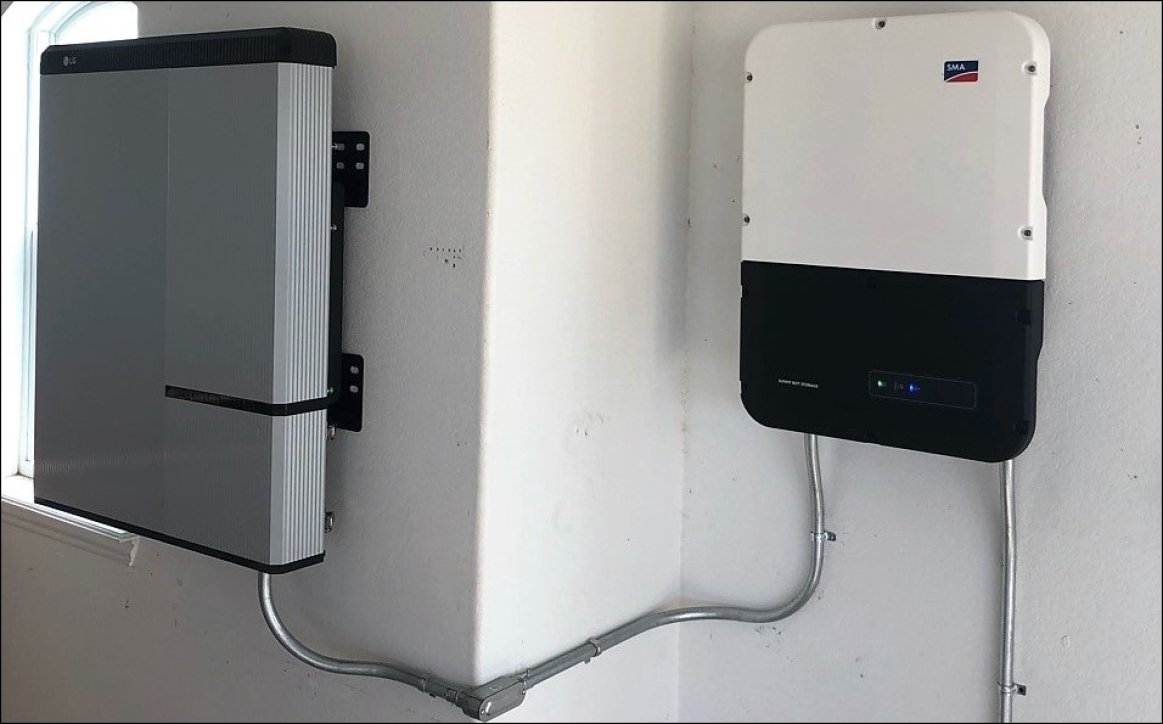
Energy storage is set to double in the United States in 2019. According to a recent study by IHS Markit, the United States will overtake South Korea as the largest grid-tied energy storage market in the world, going from 376 MW in 2018 to 712 MW this year. This does not include behind-the-meter energy storage, which adds a few hundred MW of deployed capacity.
Of the 40 states with operational battery energy storage projects, seven offer direct financial incentives to the system owner. This article will highlight those local incentives in the hopes that solar contractors can better inform their customers, lower the ROI on solar + storage projects, and help accelerate the adoption of more grid-tied storage in the United States.
Arizona
Salt River Project, one of the largest utilities in Arizona, launched a Battery Storage Incentive Program on May 1st, 2018. Through this rebate program, SRP will write a check for up to $3,600 ($300 per kWh-DC) on residential systems. Customers must purchase and install qualifying battery storage systems and also agree to participate in SRP's battery study. The rebate will last for up to 36 months or until the limit of 4,500 homeowners is reached. At the time of writing this article, over 3,900 reservations remained.
California
California has always been ahead with regards to clean energy, and its Self-Generation Incentive Program (SGIP) is no exception. Since its inception back in 2001, the program has been revised a few times (for example, it no longer provides rebates for PV systems), but was recently extended in 2018 by Gov. Jerry Brown, adding $800 million in funding up to 2025. Rebates are available for energy storage systems in the state's largest utilities: PG&E, SoCalGas, SCE and SDGE (via the Center for Sustainable Energy).
Florida
The Jacksonville Electric Authority (JEA), which covers Florida's Northeastern population, has a Battery Incentive Program for home and business owners. Effective since April 1st, 2018, JEA's rebate provides $4,000 per energy storage system that meets their qualifications, such as having a 6 kWh usable capacity rating and a warranty of at least 10 years or 5,000 cycles. The rebate amount is subject to change after the first 50 participants.
Maryland
The Maryland Energy Administration offers an Energy Storage Tax Credit. The tax credit is the lesser amount between $5,000 for a residential system, $75,000 for a commercial system, or 30% of the total costs for the energy storage installation. The program's funding in 2019 is $300,000 for residential systems and $450,000 for commercial systems, with most of it still being available on the residential side and all of it being up for grabs on the commercial.
Nevada
NV Energy, the utility that covers most of the large cities in Nevada, offers a residential and commercial incentive program for customers installing energy storage and tying it to their solar systems. Customers can join a Time-of-Use (TOU) rate plan and receive incentives via selling energy back to the grid for a higher $/Wh during peak hours, or they can choose to remain in the standard rate. The program, which began in September of 2018, has 5 steps with $1,000,000 per step in reserved funds.
New York
AB 260, enacted in October 2017, amended the property tax exemption in New York state to include energy storage projects for residential customers. Named the Energy Conservation Improvements Property Tax Exemption, customers who add energy storage to their house can now have 100% of the value added to the residence from the storage system removed from their property taxes. This exemption lasts for 15 years.
Wisconsin
Wisconsin's Public Service Commission offers grants via its Energy Innovation Grant Program as a way to reduce the state's energy consumption, increase energy resiliency and grow the state's renewable energy portfolio. Limited to municipal or tribal governments, K-12 school districts, or manufacturers, the grant provides the opportunity for those entities to receive funds for energy storage or solar projects The program began in 2018 and the budget for 2019 is $5,000,000.
Conclusion
There are currently only seven energy storage incentive programs for homeowners and business across the country. However, as solar keeps on growing and utilities begin to hit their NEM caps, we can expect them to slowly introduce more TOU rates and rebates for energy storage. Plus, given the fact that lithium-ion batteries are decreasing in price, it is only a matter of time until energy storage becomes attractive in markets where it currently does not make financial sense.
Before proposing one of these incentives to a residential or commercial customer, it is recommended to thoroughly read the individual applications and requirements to see if the project qualifies. We also recommend reading through Barry Cinnamon's article on 10 mistakes he's made over the years selling and installing energy storage systems. For further support, reach out to your dedicated Greentech Renewables Account Manager.
An updated version of this article can be found here.